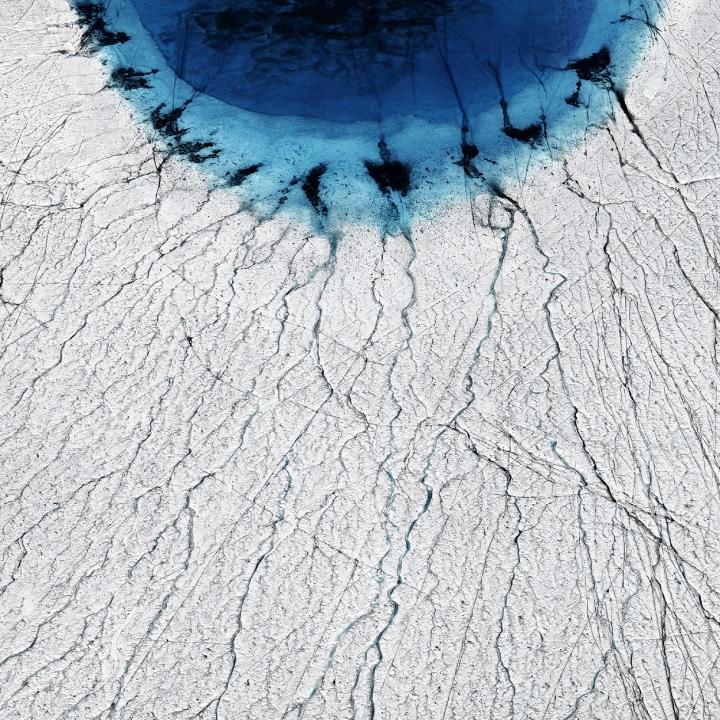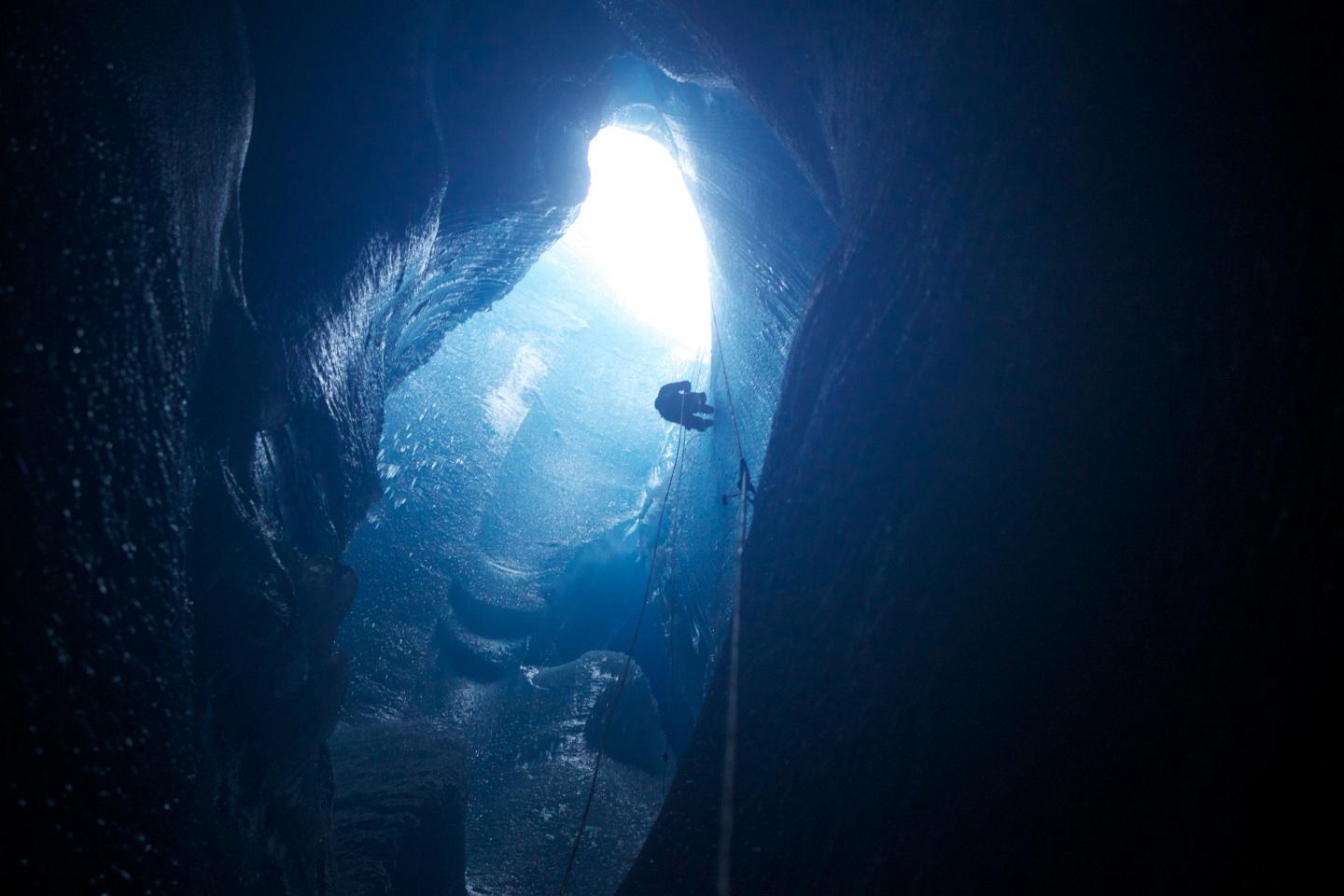Greenland Is Literally Cracking Apart and Flooding the World

Visit Greenland on the right summer day, and you could see a 12-billion-gallon lake disappear before your very eyes.
Glaciologists saw this happen for the first time in 2006, when a 2.2-square-mile (5.6 square kilometers) lake of melted ice drained away into nothing in less than 2 hours. Researchers now see such events as a regular part of Greenland's increasingly hot summer routine; every year, thousands of temporary lakes pop up on Greenland's surface as the surrounding ice melts, sit around for a few weeks or months, and then suddenly drain away through cracks in the ice sheet underneath. [Images of Melt: Earth's Vanishing Ice]
On a recent expedition, however, researchers saw an alarming new pattern behind Greenland's mysterious disappearing lakes: They're starting to drain farther and farther inland. According to a new paper published today (March 14) in the journal Nature Communications, that's because the summer lakes of Greenland drain in a "cascading" chain reaction enabled by a vast, interconnected web of cracks below the ice — and as temperatures climb, the web is getting wider.
"Lakes that drain in one area produce fractures that cause more lakes to drain somewhere elsewhere," co-author Marion Bougamont, a glaciologist at the University of Cambridge's Scott Polar Research Institute, said in a statement. "It all adds up when you look at the pathways of water underneath the ice."
In the new paper, Bougamont and her colleagues used 3D ice-flow models and satellite images of the Greenland Ice Sheet to study this chain reaction. The authors found that when warming weather causes a single lake to drain into the underlying ice sheet, the ice flow below that lake can accelerate dramatically — up to 400 percent faster than in winter months.
As the draining water surges away from the original lake, it can destabilize other nearby ice beds. Fresh cracks form, new lakes drain and the reaction intensifies day by day. In one incident, the researchers observed 124 lakes drain in just five days. Even lakes that formed hundreds of kilometers inland, which were previously thought to be too far removed from the ice bed to drain into it, proved vulnerable to the chain-drain-reaction as new fissures in the ice formed.
This all amounts to billions of gallons of melted ice plunging below Greenland's surface every few days. Some of this water remains trapped in the ice sheet; much of it pours into the surrounding ocean.
Get the world’s most fascinating discoveries delivered straight to your inbox.
"This ice sheet, which covers 1.7 million square kilometers [650,000 square miles], was relatively stable 25 years ago, but now loses one billion tons [900 million metric tons] of ice every day," lead author Poul Christoffersen, also from Cambridge's Scott Polar Research Institute, said in the statement. "This causes one millimeter of global sea level rise per year, a rate which is much faster than what was predicted only a few years ago."
According to a 2017 report, ice loss in Greenland was responsible for about 25 percent of global sea level rise in 2014 — up from just 5 percent in 1993. If Greenland melts completely, it could result in a global sea-level rise of about 20 feet (6 meters). According to the Cambridge researchers, a total loss of Greenland's ice is "extremely unlikely in this century" — but even minor increases in sea level could have severe consequences around the world, the authors noted. According to a recent report from the National Oceanic and Atmospheric Administration (NOAA), if sea levels rise half a meter (1.6 feet) by 2100, many American coastal cities will experience high-tide flooding "every other day" or more.
Originally published on Live Science.

Brandon is the space / physics editor at Live Science. With more than 20 years of editorial experience, his writing has appeared in The Washington Post, Reader's Digest, CBS.com, the Richard Dawkins Foundation website and other outlets. He holds a bachelor's degree in creative writing from the University of Arizona, with minors in journalism and media arts. His interests include black holes, asteroids and comets, and the search for extraterrestrial life.

